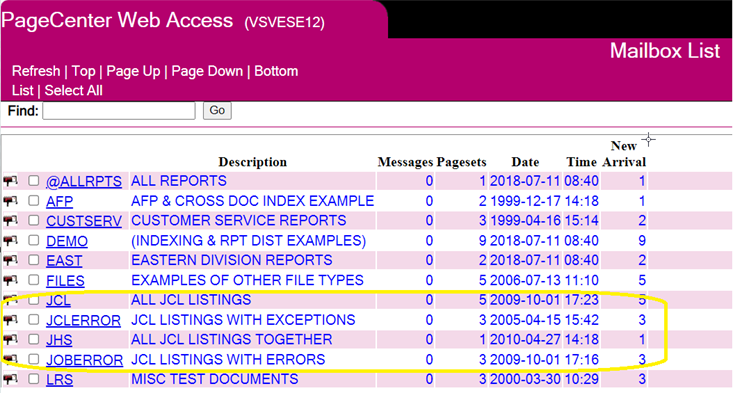The storage of process listings from the z/OS environment, such as those generated by batch applications, IMS, CICS, etc. is critically important for a variety of reasons. These listings not only provide a snapshot of mainframe processing but also flag any program or operational failures. The most common such listings are JES listings, which are stored within the z/OS Job Entry Subsystem (JES2/JES3) environment. JES is a component of IBM's MVS operating systems that is responsible for managing the flow of mainframe batch flows.
These listings are typically available online for a number of hours or days and then possibly backed up for future research. In the case of JES listings, Job-related PROC/JCL displays along with function information displaying dataset allocation & deallocation and Job Step return codes are included. One way to enhance the security and usability of these listings for an extended period is to route them from JES to a long-term report viewing and archiving system such as PageCenter or PageCenterX software from LRS.
Long-term report viewing & archiving has the ability to categorize listings by batch process, MVS return codes, etc. This allows mainframe customers to quickly access process flow information for individual steps and jobs or application groups. For example: one folder within an online report viewing & archiving product might contain all job listings within a batch application from a specific window of time. Another folder might contain all batch job listings with a particular error condition code generated during a data center shift. See example of categorization below:


The viewing & archiving systems have the ability to store mainframe listings on the mainframe in compressed format rather than using critical JES spool space. The listings are also secured for the lifetime of the listing. In the example of LRS' PageCenter solution, the security can be defined via a combination of internal product security and in-house mainframe security packages (such as RACF). The external security controls who can log into the viewing system while the internal security controls which listings can be viewed by a particular user.
Critical mainframe listings do not need to be limited to short-term access, utilizing JES spool space, with limited categorizing options. Operations and Help Desk staff can have secure and organized access to real-time process flow information. The viewing & archiving system enables z/OS customers to capture JES listings and store them compressed on mainframe disk space for use by the viewing & archiving system. There are several viewing access mechanisms including 3270 (ISPF, VTAM, TSO) and web GUI.
If more efficient, secure, organized viewing of your z/OS process listings is something that could benefit your IT or Help Desk staff, Contact LRS to schedule a deeper solution explanation.